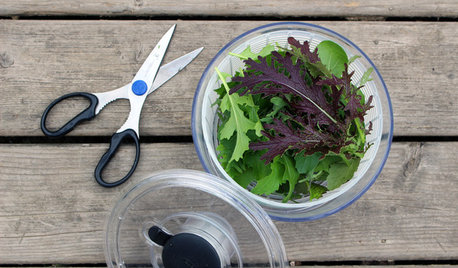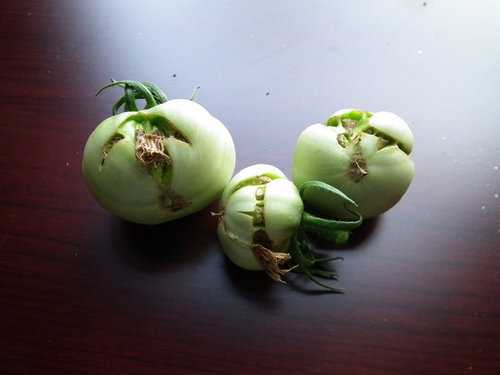Help identifying tomato injury
aisa
11 years ago
Related Stories

FARM YOUR YARDThe 8 Tools That Help Bring the Farm to Your Table
Vegetable gardeners get a big assist from these essential helpers
Full Story
HOUSEKEEPING10 Tips to Streamline Laundry Day
Little adjustments to your attitude and routine can help take the wrinkles out of doing the wash
Full Story
LIFE6 Tips for Teaching Your Kids to Be Good Neighbors
Everyone wins when your children learn to respect boundaries, get help when they need it and show others they care
Full Story
BEDROOMSThe Right Mattress: The Secret to a Great Night’s Sleep
We spend a third of our lives asleep, so investing in a quality mattress is essential. Check out this expert advice to help you choose yours
Full Story
DECORATING GUIDESLiving Room Features That Never Go Out of Style
These key pieces will help your living room keep its good looks, no matter what's in fashion
Full Story
CONTRACTOR TIPSWhat to Look for in a Contractor's Contract
10 basic ingredients for a contract will help pave the way to remodel happiness
Full Story
DECORATING GUIDESHouzz Tour: Traditional Meets Transitional in a Townhouse
A Southern California couple downsizes, and their designer helps them push past traditional boundaries
Full Story
FALL GARDENINGReflecting on a Gardening Year
Mistakes and successes, surprises and comforts. The garden helps us grow in new ways every year
Full Story
HOUZZ TOURSWe Can Dream: An Expansive Tennessee Farmhouse on 750 Acres
Wood painstakingly reclaimed from old barns helps an 1800s farmhouse retain its history
Full Story
GARDENING AND LANDSCAPING10 Great Ways to Unplug and Tune In to Nature
Whether you pledge to camp out or just promise yourself a stroll, these ideas will help you heed the call of the outdoors
Full StoryMore Discussions








missingtheobvious
carolyn137
Related Professionals
Bowie Landscape Contractors · Concord Landscape Contractors · Doctor Phillips Landscape Contractors · Hilo Landscape Contractors · Lebanon Landscape Contractors · Pompano Beach Landscape Contractors · Thornton Landscape Contractors · Yuba City Landscape Contractors · Erlanger General Contractors · Klamath Falls General Contractors · Mishawaka General Contractors · Norfolk General Contractors · Dorchester Center Decks, Patios & Outdoor Enclosures · Manchester Decks, Patios & Outdoor Enclosures · Santa Ana Decks, Patios & Outdoor Enclosuresmissingtheobvious
aisaOriginal Author
carolyn137